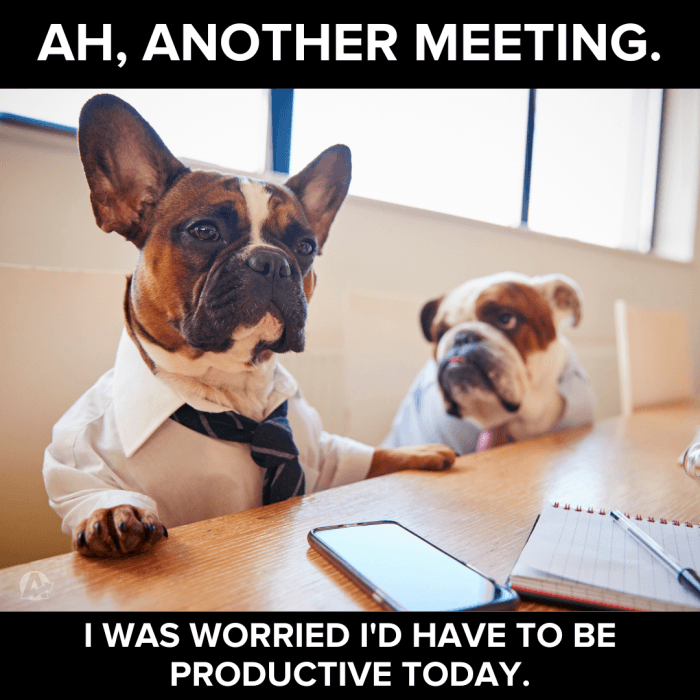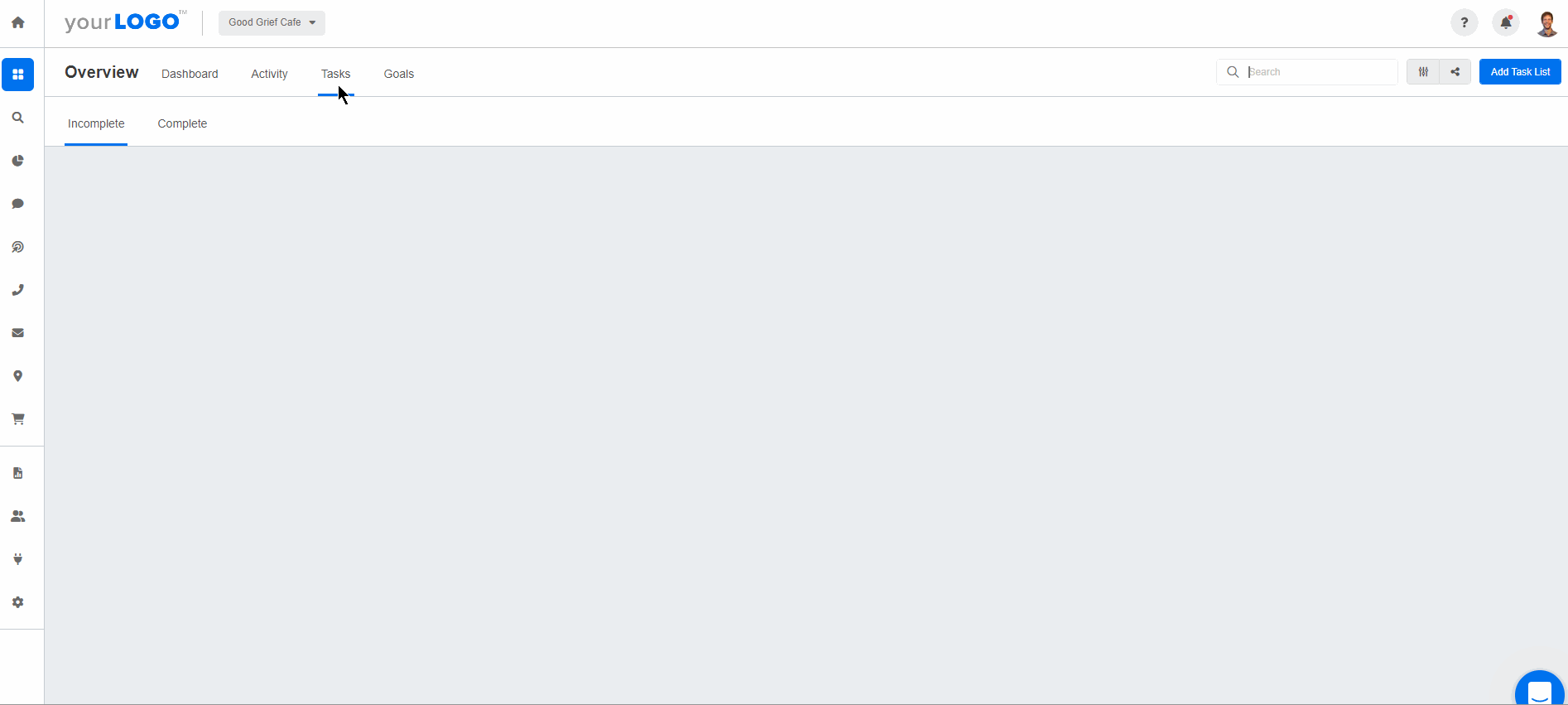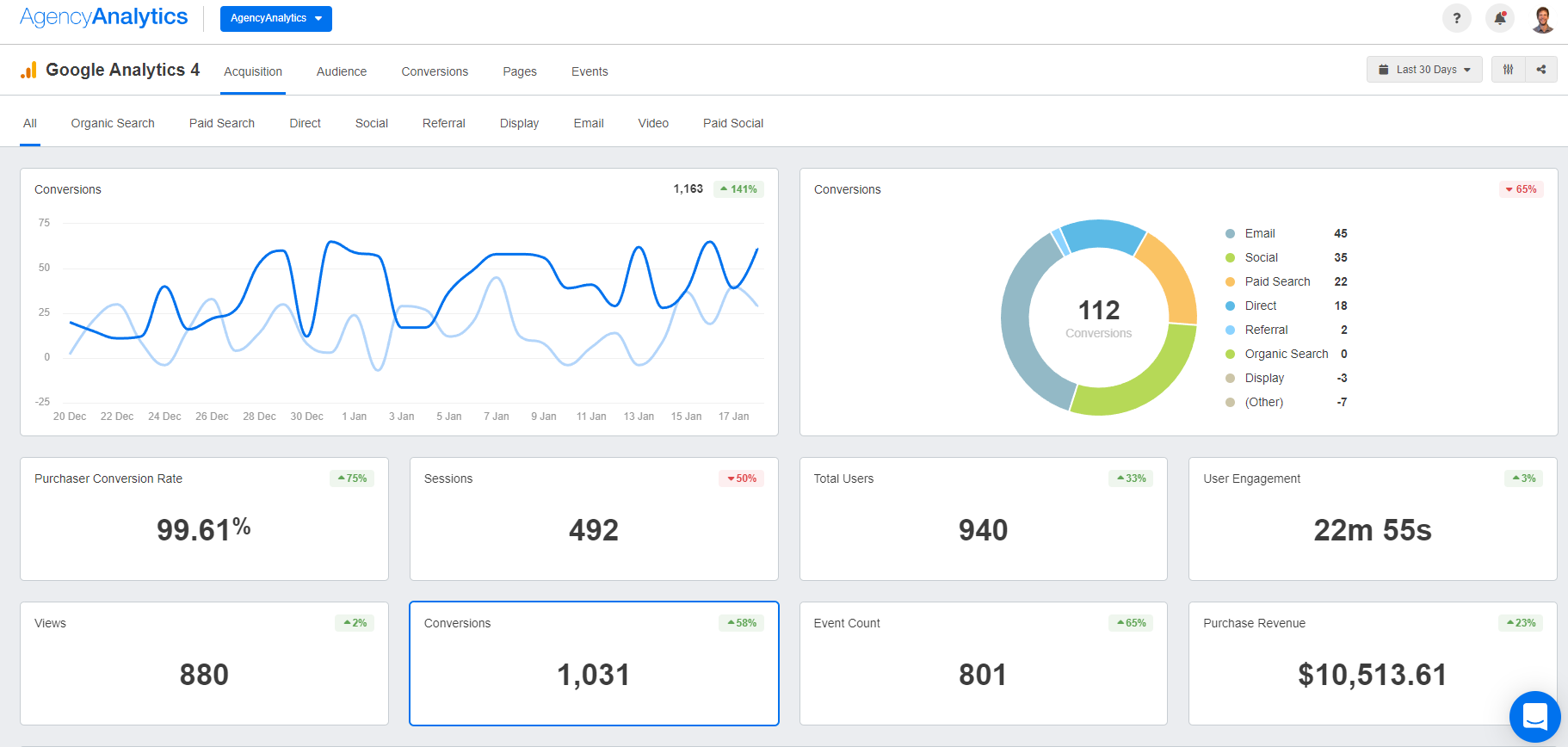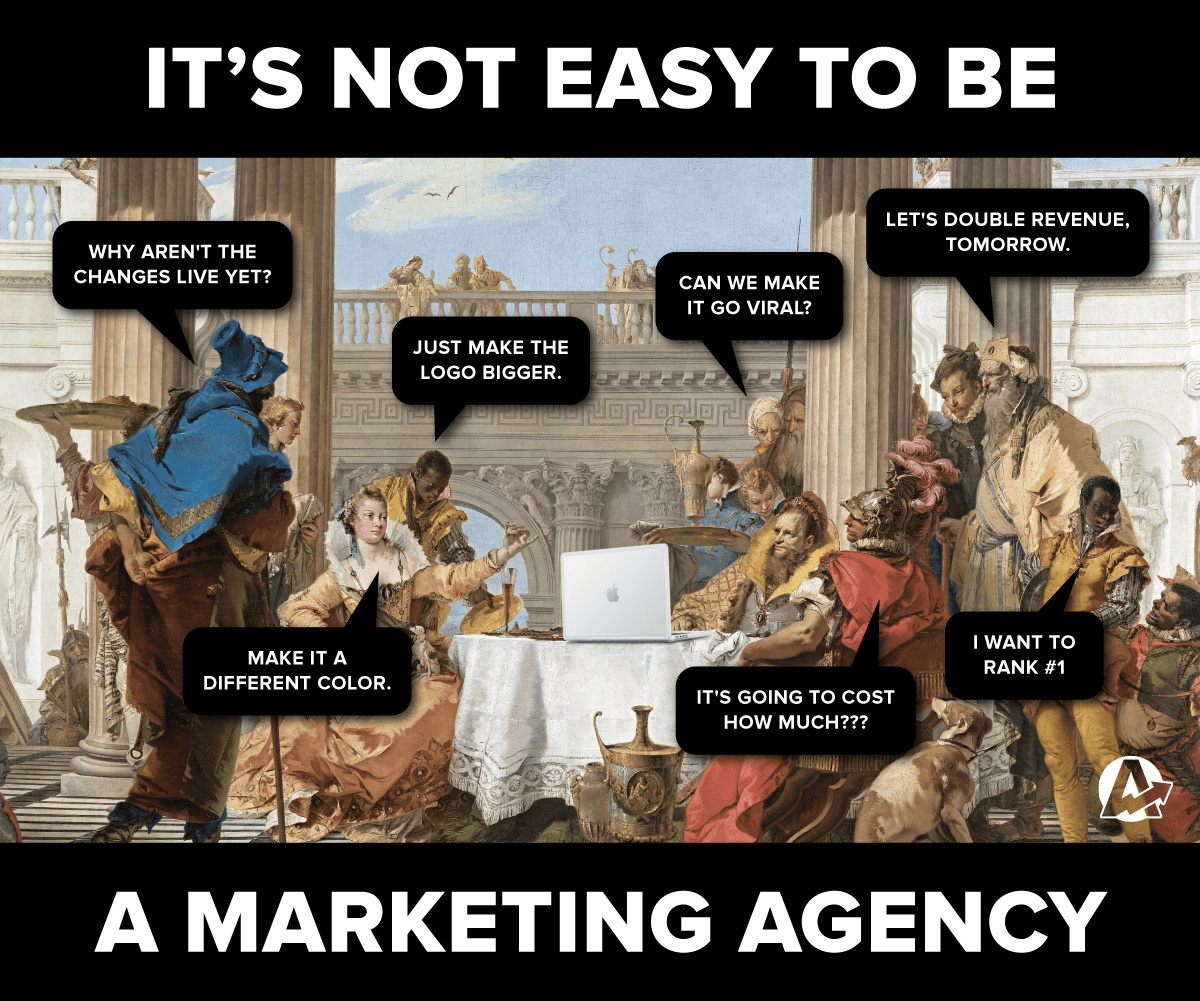Table of Contents
QUICK SUMMARY:
A manager meeting is a strategic session involving agency leaders, employees, or clients. These meetings are necessary for internal planning, client communication, and goal setting. This article covers seven types of managers' meetings that every agency should know, providing practical strategies to optimize each meeting agenda, enhance collaboration, and clarify goals to improve productivity.
Manager meetings are a must-have for strategic internal planning, communicating with clients, and setting long-term agency goals. They’re a powerful way to enhance your agency’s operations without compromising productivity.
Let’s face it, though–when your schedule is jam-packed, deadlines are looming, and the team seems to have an urgent request every time you check your phone, conducting yet another manager meeting sometimes feels like a drag.

That said, manager meetings don’t have to be a dreadful part of your weekly Google calendar. The key lies in understanding how to plan effective meetings that maximize your valuable time while cutting down on the fluff that doesn’t add to the bottom line.
In this article, we’ll explore the different types of manager meetings that every agency should know and their use cases.
What Is a Manager Meeting?
A manager meeting is a pre-planned session where an agency lead meets with employees, team leaders, other members of the management team, or clients.
The context and attendance of this meeting vary depending on the goal. Take the following examples:
The CEO and leadership team (e.g., CMO, COO) meet to discuss the agency’s long-term vision, yearly objectives, and strategic priorities.
Agency managers (e.g., Account, Creative, and Project Managers) have a management meeting to coordinate and resource large-scale marketing campaigns to focus on organizational success.
A Client Relations Manager meets with a legacy client to discuss a change in pricing.
A Digital Marketing Manager has quarterly meetings with a Social Media Coordinator to discuss performance and improve team communication.
A Creative Director meets with all design team members to share departmental goals.
Regardless of the case, manager meetings are meant to provide direction and clarity, all while creating a forum for open communication.
The Benefits of Manager Meetings
Wondering why manager meetings are important? There are more than a few reasons–let’s explore below.
Acknowledgment | Regular meetings are a chance to celebrate wins, boost employee engagement, and ensure each team member feels valued. |
Planning | Pre-planning resource allocation, budgeting, and operational efficiency ensure that client projects are adequately staffed. |
Review | Manager meetings allow the review of client campaign performance, current priorities, and team progress. |
Client Feedback | Discussing client feedback and status updates will improve service delivery. Over time, this leads to higher client retention. |
Problem-solving | A manager meeting is an opportunity to address challenges and brainstorm solutions collectively. |
Goal-setting | Management meetings are essential for developing an overarching strategy and creating business goals. |
Teamwork | By bringing together different departments, these meetings foster collaboration and lead to greater team synergy. |
Growth | Managers share key learnings and insights to ensure the professional development of each team member. |
7 Types of Manager Meetings in Marketing Agencies
Different scenarios call for different manager meetings.
Sometimes, a management meeting is needed to address a high-level issue. In other instances, one-on-ones with employees are ideal for analyzing client-related tasks. To give you a better understanding, here’s a breakdown of the most common types of manager meetings.
1. Internal Team Check-Ins
Schedule regular meetings between managers and their direct reports to guarantee that each agency team operates efficiently. These discussions are meant to enhance communication, share status updates, and provide support when needed.
Internal team check-ins are:
Weekly meetings (or less frequently), depending on the needs of the team and the pace of client projects.
A chance to discuss what has been accomplished since the last meeting and what’s planned for the upcoming period.
Essential to address challenges that team members are facing. Managers are responsible for providing guidance to resolve these issues.
An opportunity to review workload and resource allocation. This ensures that team members aren’t overburdened and prevents burnout.
2. One-on-One Meetings
1:1 meetings are private discussions between a manager and a direct report, typically occurring weekly or biweekly. These forums are intended to share updates about ongoing client projects, current priorities, and any roadblocks.

Keep a rolling to-do list for employees and streamline agency task management. Improve your agency’s operational efficiency–it’s all possible with AgencyAnalytics, free for 14 days.
Use one-on-ones to build a trusting relationship and ensure employee well-being. Arguably, it’s the most important meeting on any manager’s calendar.
Looking to refine existing one-on-one meetings? Here’s an overview of how to structure them.
Before the One-on-One Meeting
Step | Description |
|---|---|
Prepare beforehand | Both manager and employee prepare for the meeting by reviewing recent work (such as progress on client projects) and feedback from previous 1:1s. |
Set an agenda | Create a meeting agenda to ensure the 1:1 is focused and productive. Include detailed updates about client campaigns or upcoming initiatives. |
During the One-on-One Meeting
Step | Description |
|---|---|
Keep an open dialogue | This meeting is conversational. Managers should check in with employees about their well-being and workload. Focus on critical items such as current campaign success or challenges. |
Review and set goals | Benchmark the employee’s progress against pre-set goals. This ensures they’re on track to achieve those targets for a defined period. |
Exchange feedback | Managers are responsible for offering detailed feedback on employee performance. Similarly, it's important that employees express concerns, suggest improvements, or request assistance. |
After the One-on-One Meeting
Step | Description |
|---|---|
Set clear action items | Following the meeting, both parties should have clear action items. This could involve tasks related to client projects, professional development activities, or process fixes. |
Document the meeting | Summarize key takeaways, decisions, goals, and next steps from the one-on-one meeting. Use this summary as a guide for the next meeting. |
Schedule future meetings | Set a date for an upcoming meeting and plan for interim check-ins (if necessary). Work towards resolving any time-sensitive deliverables before the next 1:1. |
3. Goal-Setting and Strategy Meetings
Every agency needs a strategic plan–it’s essential for long-term planning and growth.
Internal operations aside, goal-setting and strategy meetings are also important on a client level. They outline your agency’s responsibilities and help create agreed-upon deliverables.
To contextualize this further, let’s consider a few examples.
Agency Leadership Meetings
Top-level executives (e.g., CEO, Directors, CMOs) may meet to plan high-level objectives, such as expanding the agency’s market presence.
The agenda of this management meeting will likely include a SWOT analysis, revisiting the agency’s ideal client profile, and setting goals (e.g., acquiring 100 clients in a newly targeted niche).
These senior-level management meetings set the tone for the rest of the agency. Once big-picture objectives have been developed, department heads are better equipped to create targets for their teams.
This management meeting should happen at a critical time (e.g., four months before the new business quarter) to allow adequate planning and department buy-in.
Department Management Meetings
Depending on the project scope, include goal-setting management meetings for department heads only. Use this forum to create a tactical plan while ensuring C-suite leaders aren’t bombarded with nitty-gritty details.
For example, let’s say you’ve got a large-scale programmatic advertising campaign in the pipeline. It involves resourcing from multiple departments, such as Media Buying and Social Media.
In this case, department management meetings are essential to plan employee workloads, remove internal siloes, and ensure seamless project management.
Employee-Level Meetings
In these meetings, KPIs or OKRs are communicated so employees know exactly what’s expected by the end of a specific period. It’s guided by the goals set by the senior management team (as we previously described). For example, an agency sales rep may need to accomplish 100 targeted calls to help meet the agency’s goal of 100 new clients per quarter.
This meeting is also intended to be collaborative and should involve active participation. If any proposed goals seem unfeasible, it’s an appropriate time for employees to voice concerns.
Client-Level Meetings
This type of meeting occurs between your agency and the head of a client team, along with their direct reports. It is typically scheduled as part of the onboarding process or when an existing client embarks on a fresh project.
These goal-setting meetings establish clear targets and ensure that both parties are on the same page.
To ensure an effective agency-client meeting, include:
A project summary and a more detailed list of deliverables.
Well-defined team roles and responsibilities.
A timeline with deadlines and milestones.
A communication plan so clients know how to reach their agency liaisons.

Streamline communication and client reporting in one place. Integrate AgencyAnalytics with your favorite messaging app, including Zendesk and Intercom–try it today, free for 14 days.
After you’ve decided on client goals, schedule update meetings for performance discussions and recommendations.
To cut down on meeting times, consider granting client login access to dashboards. This keeps clients in the loop while ensuring data transparency.
4. Performance Review Meetings
In these structured meetings, managers and direct reports discuss the employee’s performance over a specified period.
A performance review is a two-way dialogue aimed at recognizing employee contributions, boosting motivation, and discussing future professional development. Here’s what this meeting should include.
Item | Description |
|---|---|
Employee Appraisal | Evaluate the employee's accomplishments against objectives (e.g., they met a 10% conversion rate target for a client’s social media campaign last quarter). |
Creative Assessment | Assess their creative output and whether it met client expectations (e.g., examining a copywriter's ability to produce content that aligns with content briefs). |
Relationship Management | For client-facing employees, discuss whether they successfully maintained relationships (e.g., achieving an 85% client retention rate). |
Training Gaps | Identify areas where an employee needs further training (e.g., a supplementary graphic design course or advice on client management). |
Future Goals | Focus on future goals that are realistic and relevant (e.g., aiming for an ROI of 140% for a client campaign after accomplishing 130% in the previous quarter). |
Adequate Documentation | Formally document each party’s feedback during this important meeting. Upon completion, keep signed copies for future reference. |
5. Professional Development Meetings
Professional development meetings are primarily focused on enhancing employee skills.
This ensures that your staff provides top-notch service to clients and remains proficient in their respective fields.
Employees who receive development opportunities often feel more valued in their roles. As a result, this improves morale and reduces staff turnover. It also provides a competitive edge over other agencies with less-developed talent.
Professional development meetings may include:
Skill-building workshops (e.g., “Advanced SEO Techniques”).
Training on new marketing tools (e.g., maximizing ChatGPT).
Industry discussions about emerging market trends (e.g., the impact of using AI for copywriting services).
Knowledge-sharing from external events (e.g., insights from a conference on PPC best practices).
6. Problem-Solving Meetings
Problem-solving meetings aim to address specific challenges that may arise over time.
These meetings typically involve internal staff, but clients may be looped in if the situation warrants their input. For instance, if a client initially set up their Google Ads account, your agency might require their assistance to resolve configuration issues.
Problem-solving meetings are also essential for:
Improving current agency processes (e.g., better deadline management).
Addressing an internal lag when responding to client inquiries.
Troubleshooting campaign underperformance.
Discussing technical or platform-related challenges (e.g., navigating Google Analytics 4 updates).

Identify client campaign hiccups before they become full-blown issues. Use a real-time dashboard to monitor exactly what's happening–try AgencyAnalytics by signing up for a free 14-day trial.
Issues That Require Immediate Attention
Problem-solving meetings are also scheduled in response to critical issues. They typically require swift action because of the potential implications or consequences.
Here are a few examples of when these meetings are needed:
An employee violates a workplace policy.
An employee is affected by an extenuating circumstance (e.g., a serious illness) and needs to hand over client-related tasks.
There has been a significant change in a client account that affects service delivery (e.g., a budget cut or job loss).
A client hasn’t paid their fees, which goes against the terms of their agency contract.
A client has a social media PR crisis.
Navigate these meetings by assessing the problem and developing a mitigation plan. Where necessary, explain the reasons for any resulting consequences (e.g., job suspension or contract termination).
7. Skip Level Meetings
Sometimes, it’s beneficial for agency leaders to know what’s happening on the ground. While they may have 1:1 meetings with managers, their employees often interact directly with clients and handle tactical tasks. Therefore, it’s a no-brainer that they’ll have the most insights about specific issues.
A skip-level meeting is valuable in this scenario. Employees meet directly with higher-level executives, bypassing their immediate managers.
Sounds interesting, right?
It’s not meant to exclude managers from the conversation. Instead, it’s about gathering the right information to make informed, big-picture decisions.
Let’s take an example. Say your enterprise-level agency is launching a new PPC service that involves changing team roles and using new technology. The VP of Marketing wants the team's perspective before making significant organizational changes.
So, the VP decides to have a skip-level meeting with affected staff (like Advertising Specialists and Graphic Designers). It’s the most efficient way to get their direct feedback about the proposed initiative and change management process.
This approach lets those on the front line actively contribute to the agency’s future plans. It fosters team morale and ensures that all voices are heard.
3 Common Challenges With Conventional Manager Meetings
While meetings are undoubtedly helpful, they also come with unique challenges that you know all too well–let’s explore further.
Challenge #1: Too Many Meetings
Is there too much of a good thing? When it comes to meetings, the answer is yes.

To combat this issue, schedule shorter and more focused meetings. Schedule breaks during longer sessions (e.g., a 10-minute break every hour). Where appropriate, use messaging platforms or email to communicate.
There have been times when the agency's day-to-day operations felt obscured by a fog of unnecessary meetings. To regain clarity, we initiated a 'Meeting Detox' program. We began by auditing our meetings and identifying those that added value. We trimmed down excessive meetings, replaced them with purpose-driven huddles, and encouraged team members to embrace asynchronous communication methods. This resulted in more impactful, focused work.
Jackson Sands, Marketing Manager, Sands Media
Challenge #2: Agenda-Less Meetings With No Clear End
Without a well-defined agenda, a meeting may turn into runaround banter.
For example, let’s say your Agency Founder schedules a meeting for all department managers to "see where everyone is at.”
Your Creative Director kicks things off by chatting about new design trends. After a few minutes, your Digital Marketing Manager begins an angry monologue about Google algorithm changes. Others chime in to commiserate, and before you know it, the hour is up. As a result, attendees are left confused, realizing that the meeting had been largely unproductive.
Here’s a tip: Set a predefined time for agenda items and allow some wiggle room if necessary. To keep things to the point, assign a team member to moderate. This ensures that the conversation doesn’t steer into the wilderness while keeping aware of the meeting time.
One of the most impactful leadership mistakes I made was neglecting to set clear expectations. To rectify this, we implemented a rigorous onboarding process for every new project, ensuring that expectations were documented and revisited regularly. Internally, this involved more frequent team check-ins and a reiteration of project goals during meetings. Externally, we provided clients with clear roadmaps, regular updates, and more opportunities for feedback.
Adam Stewart, Founder, Digital Bond Marketing
Challenge #3: Arriving at a Decision
“Our last post went viral! Let’s keep this strategy.”
“But what about this new social media approach? It’s super on trend right now.”
Sound familiar? We’ve all been in a situation where having too many cooks in the kitchen leads to a lack of decision-making.

Whether it’s making an internal decision or figuring out what a client wants, it sometimes feels like a merry-go-round that doesn’t quite stop.
Instead of succumbing to decision-making procrastination, consider a pros-and-cons analysis, voting, or assigning a final decision-maker for internal decisions. If your clients need a nudge to make a decision, set a “Decide by” deadline.
What To Include in a Manager Meeting
Now that we’ve explored the ins and outs of manager meetings, here’s a customizable agenda template to use.
Item | Description |
|---|---|
Meeting Agenda Overview | Briefly outline topics to be discussed, including the meeting purpose and goals. |
Introductions | Introduce your agency team members, especially for meetings with new clients. |
Previous Deliverables | Follow-up on past conversations or deliverables (if relevant). Include previously achieved results and other noteworthy items. |
Next Steps | Define actionable items, responsibilities, and deadlines. Share contact information for agency liaisons. |
Follow-up | Determine if and when a follow-up meeting is necessary. If so, set a date and time. |
Summary | Recap major points, decisions made, and thank participants. |
Use Manager Meetings To Drive Agency Success
Every established agency has manager meetings–it’s a given. As we’ve covered, it’s more than possible to streamline these discussions and maximize everyone’s time.
To summarize, remember these takeaways:
Create a well-planned meeting agenda.
Set a dedicated time and ensure the meeting doesn’t run longer than planned.
Actively listen when each person talks to increase engagement and encourage honest feedback.
Summarize key decisions and assign action items with deadlines. End on a positive note when possible.
It all boils down to effective communication, organization, and task management.
In fact, these are the key ingredients for any agency process, such as client reporting. Having the right systems in place is the only way to ensure sustainable growth, employee retention, and a roster of happy clients.
Whether tracking real-time marketing metrics or communicating directly with clients, use a tool like AgencyAnalytics to maximize your operational efficiency.
Make the most of your billable time by exploring the full range of reporting features on AgencyAnalytics–sign up for your free 14-day trial today.

Written by
Faryal Khan is a multidisciplinary creative with 10+ years of experience in marketing and communications. Drawing on her background in statistics and psychology, she fuses storytelling with data to craft narratives that both inform and inspire.
Read more posts by Faryal KhanSee how 7,000+ marketing agencies help clients win
Free 14-day trial. No credit card required.






